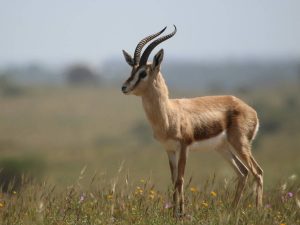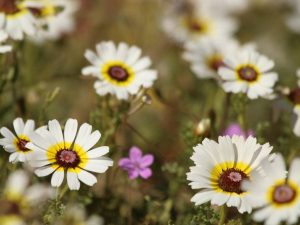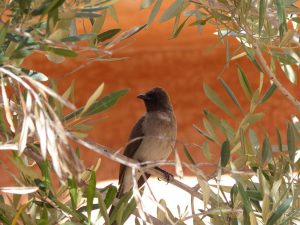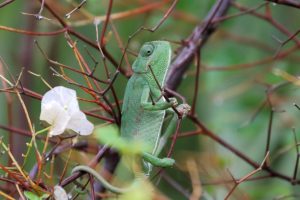
natural history, mountains and coast
An introduction to the natural history of southern Morocco.
Download leaflet
Wildlife Travel leaflet Morocco 2026
Dates
28th February-7th March 2026
fully booked
Leaders
Price
£2,190
Single Room Supplement – £220
Included
Return flight London Gatwick to Agadir. Local transport as specified in itinerary. Seven nights accommodation, full board.
Not included
Refreshments. Gratuities. Travel insurance. Covid tests and associated costs.
Group size
Minimum 4, maximum 14.
Morocco is a country of great contrasts. Situated on the edge of Europe, its culture and people are a fascinating mix of Berber, European, African and Arab influences. From the Mediterranean coast in the north, through the snow covered Atlas mountains to the arid Saharan desert these diverse habitats make Morocco a top destination for wildlife.
March is the best time for enjoying many of the flowers, both on the coast and in the mountains. With Mediterranean, Macaronesian and African influences, this area has a fascinating mix of plants including succulent euphorbias, colourful composites, toadflaxes and lavenders and interesting shrubs, including the endemic Argan tree.
The birdlife is very interesting and we should see most of the local specialties, including House Bunting, Moussier’s Redstart, Black-crowned Tchagra and, with luck, the critically endangered Northern Bald Ibis. We will visit the Sous Massa National Park, where as well as a variety of birds, we will also look for several species of antelope that have been reintroduced here, including Addax, Dorcas Gazelle and the graceful Scimitar-horned Oryx.
Based for the week at the wonderful Atlas Kasbah, near Agadir, this holiday is intended to give an introduction to the plants, birds and other wildlife of this corner of southern Morocco, including an insight into the local Berber culture, at a relaxed pace. This trip should be ideal for anyone wanting a taste of Morocco in the company of expert leaders whilst enjoying a high standard of accommodation and easy, comfortable travel.
Download trip report
Please note that holidays change, although sometimes only slightly, from year to year and previous trip reports may not reflect the planned itinerary, or other holiday details, for the current trip. Please ask us if you would like to know of any significant differences.
Day 1 Flight to Agadir and transfer to our hotel (c30 minutes).
Day 2 We explore the lanes and hillsides around the hotel and the nearby village. Colourful annuals are a feature of the field edges, with local specialities such as the orange-flowered Cladanthus arabicus, the pretty blue Volutaria crupinoides and the bugloss Echium horridum. The garden birdlife includes Common Bulbul, House Bunting and Moussier’s Redstart, species we will become familiar with over the week.
Day 3 The Atlantic coast south to the Sahara is well known for its unique communities of succulents mixed with shrubs such as Nauplius imbricatus, Searsia pentaphylla and the desert-dwelling Warionia saharae. We will visit Cap Rhir to explore these communities and visit nearby Oued Tamri, where we hope to find the endangered Northern Bald Ibis that has breeding sites nearby.
Day 4 We visit the attractive town of Taroudant, described as a ’mini Marrakech’, enjoying views from ancient city walls and exploring the labyrinthine market, House Buntings singing from the buildings and Little Swift overhead. We also visit a women’s Argan oil co-operative and visit the oasis at Tioute, the natural habitat of the date palm Phoenix dactylifera.
Day 5 We head south along the coast to the famous Sous Massa National Park to learn about the important conservation work going on here, especially the reintroduction of a variety of Saharan ‘megafauna’ to the reserve; antelopes including Dorcas Gazelle, Scimitar-horned Oryx and Addax, and the North African Ostrich. We finish our day by visiting the Oued Sous, where Greater Flamingos gather on the estuary and feed alongside various waders, gulls and terns.
Day 6 This morning we head south to the Anti Atlas, a low range of very old mountains, which form much of the landscape in the south east of the country. We will travel to Ait Baha and beyond, with stunning views and interesting plants along the way: local endemic specialities include the toadflax Linaria ventricosa and Hesperolaburnum platycarpum. Barbary Ground Squirrel and the large lizard Bibron’s Agama may appear along the roadside, while Bonelli’s Eagle soar overhead.
Day 7 Today we head in the opposite direction, for the slopes of the High Atlas, making a circuit via the aptly-named Paradise Valley and the Cascades du Immouzer. We will find the Berber Thuya Tetraclinis articulata, an interesting conifer, as well as hillsides covered in Dwarf Fan Palm mixed in with Lavandula dentata and the beautiful shrubby milkwort, Polygala balansae, with contrasting petals of deep purple and yellow.
Day 8 For our final morning, we will re-visit some of the local lanes to see how the spring has progressed. After a final lunch out on the terrace, we will have a lazy afternoon enjoying the relaxing grounds and pool, before we transfer to Agadir and our flights to UK.
Please note that the itinerary may be changed to suit the weather or other practicalities at the discretion of the leaders.
We will stay for the whole week at the wonderful, award-winning Atlas Kasbah, set in lush grounds amongst the Argan trees in the Arganeraie Biosphere Reserve. Opened in 2009, the Kasbah was designed sustainably, built using traditional techniques and local craftsmen, with a view to promoting ecotourism in Morocco and sharing the local Berber heritage. The rooms are spacious, the local culture reflected in the furnishings, with lovely views from the roof terrace and patio. The Atlas Kasbah is the first accommodation in North Africa to have been granted the prestigious World Responsible Tourism Award (Gold winner, 2015) as a recognition of its proactive ecotourism practices. In 2016 it won the COP22 Tourism and Climate Award.
All meals are included. Evening meals will be at the hotel and we will have picnic lunches on most days.
We will travel by minibus for our excursions. Our visit to Sous Massa will be in high clearance four-wheel-drive vehicles.
Group flights
Group flights are with Easyjet from London Gatwick to Agadir.
28th February depart London Gatwick 11.35, arrive Agadir 16.35
7th March depart Agadir 17.45, arrive London Gatwick 20.30
It is also possible to fly from Manchester. Contact us for details and any extra costs.
Overland travel
You can reach Morocco by train and ferry from the UK. From London you can reach Marrakech in two nights. Agadir can be reached by bus from Marrakech. Contact us to find out more, and to make your holiday flight-free.
Time zone
Morocco is one hour ahead of UK time.
Entry requirements
If you hold a British passport you can travel to Morocco for up to three months without a visa. Your passport must be valid for at least three months on your date of entry.
In March, the weather is usually sunny but not too hot. If we do get hotter weather we will adapt the itinerary as much as possible. There may be some cooler weather and some rain.
This is not a strenuous holiday but on some days we will be walking for much of the day, sometimes gently uphill. All excursions are optional and you can choose to spend more time in the pleasant grounds and rooms of the hotel if you wish. The hotel rooms are on the first or second floor and reached by stairs.




